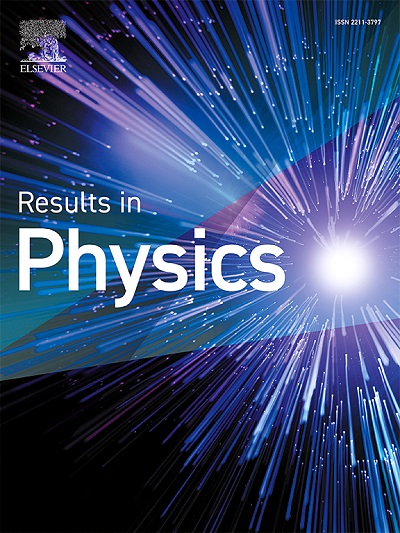Numerical investigation of a high-performance MXene and graphene-based metamaterial absorber for terahertz biosensing
IF 4.4
2区 物理与天体物理
Q2 MATERIALS SCIENCE, MULTIDISCIPLINARY
引用次数: 0
Abstract
This work presents a high-performance MXene- and graphene-centered metamaterial absorber for terahertz (THz) biosensing applications. The proposed absorber exhibits an ultra-narrowband response at 0.668 THz with an exceptionally high-quality factor (Q) of 102.9, sensitivity (S) of 0.4 THz/RIU, and figure of merit (FOM) of 40 RIU−1, outperforming existing THz sensors. The strong field confinement achieved through localized surface plasmon resonance (LSPR) in MXene and tunable graphene layers enhances detection accuracy. The absorber maintains polarization insensitivity (PI) and wide incidence angle stability, ensuring robust operation under real-world conditions. By leveraging the unique properties of MXene for high conductivity and graphene for dynamic tunability, the sensor achieves superior performance in the 0.1–1 THz molecular fingerprinting regime, enabling efficient detection of malaria, dengue, and various cancers. The compact, planar design simplifies fabrication while offering reconfigurable spectral characteristics, making it a promising platform for next-generation THz biosensing and precision diagnostics.
求助全文
约1分钟内获得全文
求助全文
来源期刊

Results in Physics
MATERIALS SCIENCE, MULTIDISCIPLINARYPHYSIC-PHYSICS, MULTIDISCIPLINARY
CiteScore
8.70
自引率
9.40%
发文量
754
审稿时长
50 days
期刊介绍:
Results in Physics is an open access journal offering authors the opportunity to publish in all fundamental and interdisciplinary areas of physics, materials science, and applied physics. Papers of a theoretical, computational, and experimental nature are all welcome. Results in Physics accepts papers that are scientifically sound, technically correct and provide valuable new knowledge to the physics community. Topics such as three-dimensional flow and magnetohydrodynamics are not within the scope of Results in Physics.
Results in Physics welcomes three types of papers:
1. Full research papers
2. Microarticles: very short papers, no longer than two pages. They may consist of a single, but well-described piece of information, such as:
- Data and/or a plot plus a description
- Description of a new method or instrumentation
- Negative results
- Concept or design study
3. Letters to the Editor: Letters discussing a recent article published in Results in Physics are welcome. These are objective, constructive, or educational critiques of papers published in Results in Physics. Accepted letters will be sent to the author of the original paper for a response. Each letter and response is published together. Letters should be received within 8 weeks of the article''s publication. They should not exceed 750 words of text and 10 references.
 求助内容:
求助内容: 应助结果提醒方式:
应助结果提醒方式:


